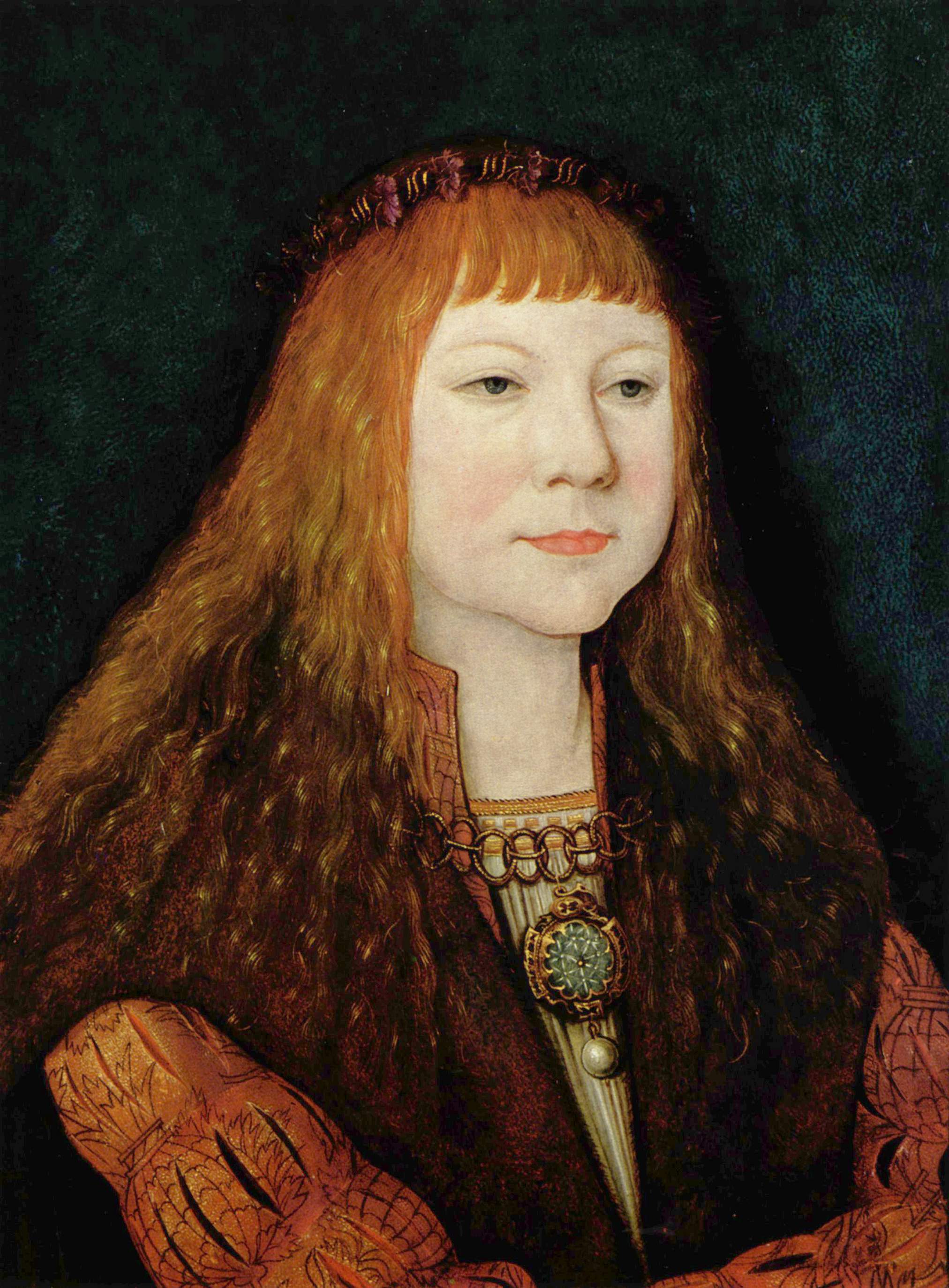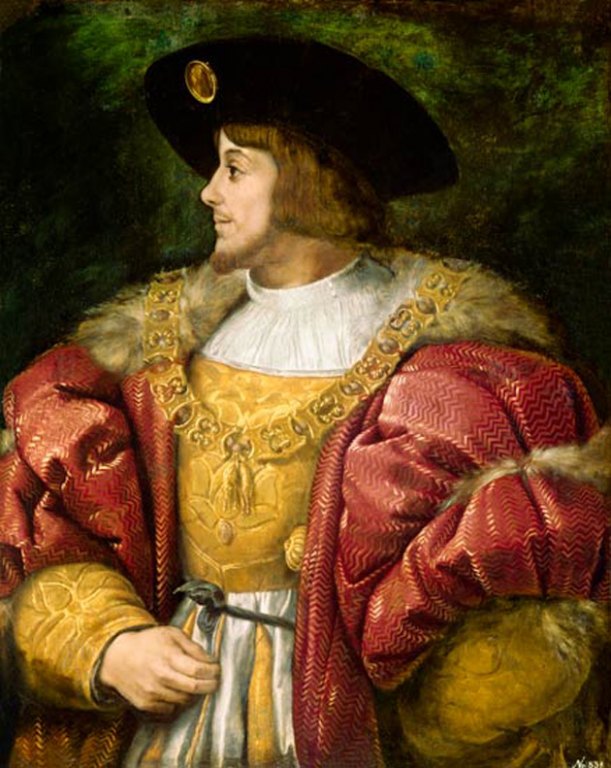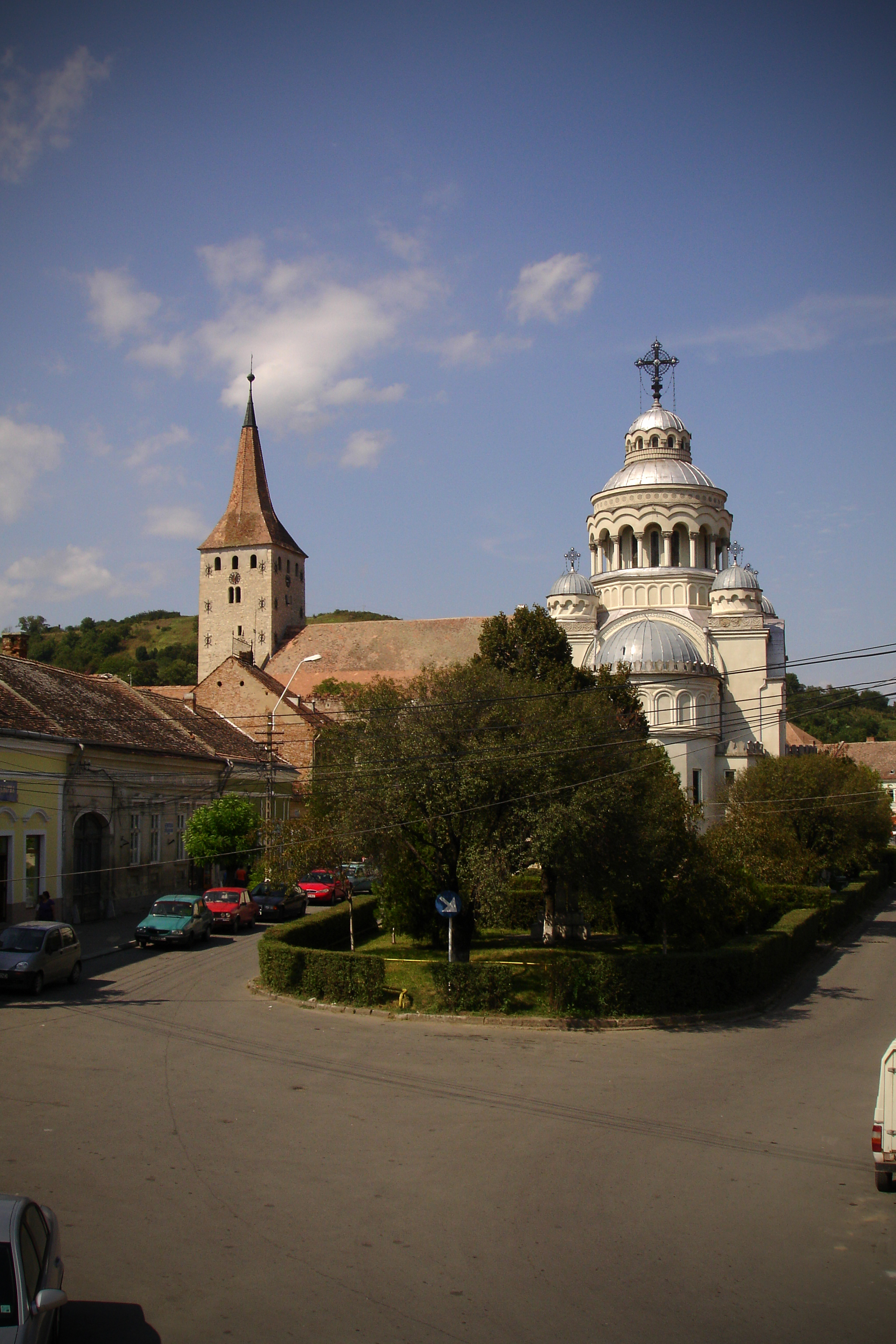|
János Barlabássy
János Barlabássy de Csesztve (; 1482–1560) was a Hungarian prelate in the first half of the 16th century. As a loyal partisan of King John Zápolya, he served as '' de facto'' the last Bishop of Csanád between 1537 and 1552, before the Ottoman Empire conquered the southern parts of the Kingdom of Hungary, including the whole territory of the diocese. Early life János (IV) was born into a Transylvanian noble family in Csesztve, Kingdom of Hungary (present-day Cisteiu de Mureș, Romania) in 1482. His father was János III, whose brother Lénárd was an influential magnate and patron of arts in Transylvania at the turn of the 15th and 16th centuries. His mother was the first unidentified wife of his father. János also had several siblings, Mihály III, Gergely, Katalin and Zsófia, in addition to half-siblings Ferenc I and János VI (from their father's second marriage). Some of the members of his family (for instance, his grandfather János II and uncle Lénárd) financially ... [...More Info...] [...Related Items...] OR: [Wikipedia] [Google] [Baidu] |
Roman Catholic Diocese Of Szeged–Csanád
The Diocese of Szeged–Csanád () is a Latin Church diocese of the Catholic Church located in the cities of Szeged and Cenad, Csanád in the ecclesiastical province of Archdiocese of Kalocsa-Kecskemét, Kalocsa-Kecskemét in Hungary. The diocesan cathedral is the Votive Church of Szeged, Cathedral of Our Lady of the Hungarians in Szeged. The Co-Cathedral of St. Anthony of Padua, Békéscsaba, Co-Cathedral of St. Anthony of Padua is based in Békéscsaba. History * 1030: Established as Diocese of Csanád by King Stephen I of Hungary, Stephen * August 5, 1982: Renamed as Diocese of Szeged – Csanád List of bishops * 1030–1046 St Gerard of Csanád, Gerard * 1046–1053 Maurus, Bishop of Csanád, Maurus * 1053–1083 ''two unknown bishops'' * 1083–1113 Lawrence, Bishop of Csanád, Lawrence * fl. 1138 Bestertius, Bishop of Csanád, Bestertius * fl. 1142 Paul, Bishop of Csanád, Paul * 1156–1169 Stephen, Bishop of Csanád, Stephen (elected) * 1188–1192 Saul Győr * 1192–1 ... [...More Info...] [...Related Items...] OR: [Wikipedia] [Google] [Baidu] |
Barlabássy Family
The Barlabássy or Barabássy family was a Nobility in the Kingdom of Hungary, noble family in the Kingdom of Hungary, which possessed landholdings mostly in Transylvania. Name They adopted their surname after their place of origin, Barabás in the region Tiszahát of Bereg County. Contemporary records and documents preserved the name of family in various formats: Barlabasi (1381), Barrabasi (1384), Barlabasy (1386), Barabassy, Barabasy, Barabassy, Barrabasy (15th century). They were also referred to as "Barlabaschy" in Transylvanian Saxon dialect (1487) and "Barlabassel" in the register of the University of Vienna (1505), in addition to a Latin Renaissance humanism, Humanist variant "Barlabassius" (1519). The first Hungarian-language charter which preserved their name was issued in 1517 by Michael II, who called himself "Barabási", in accordance with its pronunciation (but the document itself was preserved only through an 18th-century transcription). By the time of the Principali ... [...More Info...] [...Related Items...] OR: [Wikipedia] [Google] [Baidu] |
Louis II Of Hungary
Louis II (; ; ; ; 1 July 1506 – 29 August 1526) was King of Hungary, King of Croatia, Croatia and King of Bohemia, Bohemia from 1516 to 1526. He died during the Battle of Mohács fighting the Ottoman Empire, Ottomans, whose victory led to the Ottoman Ottoman Hungary, annexation of large parts of Hungary. Early life At his premature birth in Buda on 1 July 1506, the court doctors kept him alive by slaying animals and wrapping him in their warm carcasses as a primitive incubator. He was the only son of Vladislaus II of Hungary, Vladislaus II Jagiellon dynasty, Jagiellon and his third wife, Anne of Foix-Candale. Coronation Vladislaus II took steps to ensure a smooth succession by arranging for the boy to be crowned in his own lifetime; the coronation of Louis as king of Hungary took place on 4 June 1508 in Székesfehérvár Basilica, and his coronation as king of Bohemia was held on 11 March 1509 in St. Vitus Cathedral in Prague. King of Hungary and Croatia In 1515 Louis II w ... [...More Info...] [...Related Items...] OR: [Wikipedia] [Google] [Baidu] |
Battle Of Mohács
The Battle of Mohács (; , ) took place on 29 August 1526 near Mohács, in the Kingdom of Hungary. It was fought between the forces of Hungary, led by King Louis II of Hungary, Louis II, and the invading Ottoman Empire, commanded by Suleiman the Magnificent and his grand vizier, Pargalı Ibrahim Pasha. The Ottomans achieved a decisive victory through superior planning, firepower, and a well-executed encirclement that overwhelmed the Hungarian forces. The Hungarian army, encouraged by the nobility to engage prematurely, launched a frontal assault that collapsed under coordinated Ottoman counterattacks. King Louis and much of the Hungarian aristocracy were killed, resulting in the destruction of the royal army and the end of the Jagiellonian dynasty in Hungary and Bohemia. The aftermath saw the partition of Hungary between the Ottoman Empire, the Habsburg monarchy, and the Eastern Hungarian Kingdom. The battle marked the beginning of sustained Ottoman–Habsburg wars and the ... [...More Info...] [...Related Items...] OR: [Wikipedia] [Google] [Baidu] |
Aiud
Aiud (; , , Hungarian pronunciation: ; ) is a city located in Alba County, Transylvania, Romania. The city's population is 21,307 (2021). It has the status of municipiu. The city derives its name ultimately from Saint Giles (Aegidius), to whom the first church in the settlement was dedicated when built. Administration Aiud is made up of the city proper and of ten villages. These are divided into four urban villages and six villages which are located outside the city proper but fall under its administration. The four urban villages are: Aiudul de Sus, Gâmbaș, Măgina, and Păgida. The rural villages are: Ciumbrud (), Sâncrai (), Gârbova de Jos (), Țifra (), Gârbova de Sus () and Gârbovița (). Demographics At the 2021 census, Aiud had a population of 21,307. In 2016, the total population was 26,296, of which 12,900 were male and 13,396 female. [...More Info...] [...Related Items...] OR: [Wikipedia] [Google] [Baidu] |
Călan
Călan (; ; ) is a town in Hunedoara County, Romania. Twelve villages are administered by the town: Batiz (''Batiz''), Călanu Mic (''Kiskalán''), Grid, Nădăștia de Jos (''Alsónádasd''), Nădăștia de Sus (''Felsőnádasd''), Ohaba Streiului (''Sztrigyohába''), Sâncrai (''Szentkirály''), Sântămăria de Piatră (''Kőboldogfalva''), Strei (''Zeikdorf''; ''Zeykfalva''), Strei-Săcel (''Sztrigyszacsal''), Streisângeorgiu (''Sztrigyszentgyörgy'') and Valea Sângeorgiului (''Szentgyörgyválya''). Geography The town is located in the central part of the county, in the historical Țara Hațegului region. It lies in the Strei River valley, at altitude. Crossed by the DN66 national road, Călan is at a distance of from Hunedoara, from Simeria, and from the county seat, Deva. The Călan railway station serves the CFR rail line connecting Simeria to Petroșani. Population At the 2021 census, Călan had a population of 10,055. At the census from 2011, the popula ... [...More Info...] [...Related Items...] OR: [Wikipedia] [Google] [Baidu] |
János Lászai
János Lászai (also ''Lazói'' or ''Lázói'', , ; 1448 – 17 August 1523) was a Hungarian Humanist poet and clergyman. Life He was born in 1448 in Lázó or Lászó, Torna County, the territory of present-day Hungary (now an uninhabited area between Perkupa and Szőlősardó). His parentage is unknown, he was orphaned early. His family had kinship relations with the Sánkfalvis. He was adopted by Transylvanian nobleman John Barlabássy, who served as castellan of Gyulafehérvár (Alba Iulia). One of his stepbrothers was Leonard Barlabássy, an influential magnate and vice-voivode. Lászai's tutor was Anthony Sánkfalvi, who later became Bishop of Nyitra (Nitra). Following that, he attended a university in Italy. He returned to Hungary with the title of "''magister''" in the 1470s. According to contemporary records, he was an excellent orator and poet, understood mathematics and spoke Latin, Italian, Greek and "Slavic" beside his native Hungarian (but "knowing not one w ... [...More Info...] [...Related Items...] OR: [Wikipedia] [Google] [Baidu] |
Jagiellonian University
The Jagiellonian University (, UJ) is a public research university in Kraków, Poland. Founded in 1364 by Casimir III the Great, King Casimir III the Great, it is the oldest university in Poland and one of the List of oldest universities in continuous operation, oldest universities in continuous operation in the world. The university grounds contain the Kraków Old Town, a UNESCO World Heritage Site. The university has been viewed as a vanguard of Polish culture as well as a significant contributor to the intellectual heritage of Europe. The campus of the Jagiellonian University is centrally located within the Kraków, city of Kraków. The university consists of thirteen main faculties, in addition to three faculties composing the Jagiellonian University Medical College, Collegium Medicum. It employs roughly 4,000 academics and provides education to more than 35,000 students who study in 166 fields. The main language of instruction is Polish, although around 30 degrees are offer ... [...More Info...] [...Related Items...] OR: [Wikipedia] [Google] [Baidu] |
Stephanus Taurinus
Stephanus is a masculine given name. Notable people with the name include: * Stephanus I of Antioch, Patriarch of Antioch 342–344 * Stephanus of Byzantium, 6th century author of an important geographical dictionary * Stephanus of Alexandria, 7th-century Byzantine philosopher, astronomer and teacher * Stephanus Ackermann (born 1985), Namibian cricketer * Étienne Baluze (1630–1718), French scholar also known as Stephanus Baluzius * Stoof Bezuidenhout (born 1986), South African rugby union player * Stephanus Biermann (1918–2003), South African rear admiral * Stef Blok (born 1964), Dutch politician * Stephanus Brodericus (c. 1480–1539), Croatian–Hungarian bishop, diplomat and humanist writer * Stephan Coetzee (born 1992), South African rugby union player * Stephanus Jacobus du Toit (1847–1911), controversial South African nationalist, theologian, journalist and failed politician * Stephanus Grobler (born 1982), South African cricketer * Stephanus Paul Kruger (1825–1904 ... [...More Info...] [...Related Items...] OR: [Wikipedia] [Google] [Baidu] |
Kingdom Of Bohemia
The Kingdom of Bohemia (), sometimes referenced in English literature as the Czech Kingdom, was a History of the Czech lands in the High Middle Ages, medieval and History of the Czech lands, early modern monarchy in Central Europe. It was the predecessor state of the modern Czech Republic. The Kingdom of Bohemia was an Imperial State in the Holy Roman Empire. The List of Bohemian monarchs, Bohemian king was a prince-elector of the empire. The kings of Bohemia, besides the region of Bohemia itself, also ruled other Lands of the Bohemian Crown, lands belonging to the Bohemian Crown, which at various times included Moravia, Silesia, Lusatia, and parts of Saxony, Brandenburg, and Bavaria. The kingdom was established by the Přemyslid dynasty in the 12th century by the Duchy of Bohemia, later ruled by the House of Luxembourg, the Jagiellonian dynasty, and from 1526 the House of Habsburg and its successor, the House of Habsburg-Lorraine. Numerous kings of Bohemia were also elected Hol ... [...More Info...] [...Related Items...] OR: [Wikipedia] [Google] [Baidu] |
Renaissance
The Renaissance ( , ) is a Periodization, period of history and a European cultural movement covering the 15th and 16th centuries. It marked the transition from the Middle Ages to modernity and was characterized by an effort to revive and surpass the ideas and achievements of classical antiquity. Associated with great social change in most fields and disciplines, including Renaissance art, art, Renaissance architecture, architecture, politics, Renaissance literature, literature, Renaissance exploration, exploration and Science in the Renaissance, science, the Renaissance was first centered in the Republic of Florence, then spread to the Italian Renaissance, rest of Italy and later throughout Europe. The term ''rinascita'' ("rebirth") first appeared in ''Lives of the Artists'' () by Giorgio Vasari, while the corresponding French word was adopted into English as the term for this period during the 1830s. The Renaissance's intellectual basis was founded in its version of Renaiss ... [...More Info...] [...Related Items...] OR: [Wikipedia] [Google] [Baidu] |






